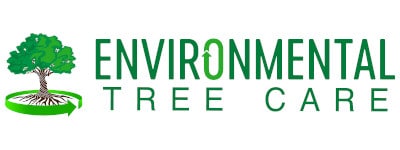As long-time Denver tree care specialists in arborist services in Denver, one of the most important topics to cover is tree disease and treatment. Tree diseases pose a serious threat to the health and longevity of trees, and it’s crucial for arborists to understand the signs and symptoms of these diseases and how to treat them effectively.
In this post, we’ll explore the different types of tree diseases that are common in the Denver area, as well as the most effective treatments for each type of disease.
Common Tree Diseases in The Denver Area
It is important to note that tree diseases may be caused by either pests (insects) or fungi.
Some of the most common infestations which lead to tree disease, include:
| Pest Name | Trees Affected |
|---|---|
| Ips Beetle | Spruce, Pine |
| Mountain Pine Beetle | Pine |
| European Elm Scale | Elm |
| Elm Leaf Beetle | Elm |
| Elm Leaf Miner | Elm |
| Kermes Scale | Oak |
| Emerald Ash Borer | Ash |
| Lilac Ash Borer | Ash |
| Spider Mites | Junipers, Pfitzers |
| Aphids | Pines, Ash, Maple |
| Japanese Beetle | Lindens, Roses, Plums, Grapes |
| Locust Borer | Locust |
| Oyster Shell Scale | Aspens |
Following are some of the fungi, bacteria and nutrient deficiencies which may contribute to tree diseases.
| Target Fungi/Bacteria/Nutrient Deficiency | Tree Species |
|---|---|
| Fireblight | Apple, Crab Apple, Pear, Hawthorne |
| Thyronectria Canker | Locust |
| Cytospera | Cottonwood, Spruce, Aspen |
| Anthracnose | Sycamore |
| Chlorosis | Maple, Oak |
Treating Tree Diseases on the Front Range
If you suspect that your trees are infected with a disease, it’s important to act quickly to prevent further damage. Here are some of the most effective treatments for tree diseases.
Pruning and Trimming:
One of the most effective ways to treat tree diseases is to prune and trim infected branches. This can help to remove the infected areas of the tree and prevent the disease from spreading further.
Fungicides:
For fungal diseases, such as Powdery Mildew, applying a fungicide to the affected area can be an effective treatment option. However, it’s important to choose the right fungicide for your specific type of tree and disease, and to follow the manufacturer’s instructions carefully.
Antibiotics:
For bacterial diseases, such as Fire Blight, antibiotics can be an effective treatment option. However, antibiotics should only be used under the guidance of a licensed arborist, as they can have negative effects on other beneficial organisms in the tree’s ecosystem.
Soil Management:
Maintaining healthy soil is crucial for preventing and treating tree diseases. Adding compost and other organic materials to the soil can help to improve its health and fertility, and can make your trees more resistant to disease.
Insect Control:
Many tree diseases are spread by insects, so controlling insect populations around your trees can be an effective way to prevent and treat diseases. This can include using insecticides, removing dead or diseased wood, and planting insect-resistant varieties of trees.
Tree diseases are a serious threat to the health and longevity of trees on the Front Range. As an arborist, it’s important to be familiar with the signs and symptoms of these diseases, as well as the most effective treatments for each type of disease. By taking a proactive approach to tree care and disease prevention, you can help to keep our trees healthy and further compromise an already fragile ecosystem.
As on of the top Denver Tree Service companies in the Denver area, we have been serving local homeowners, businesses and municipalities since 2004. To obtain a free evalutation of your tree’s health, call us today at (303) 368-8454, or complete the form below now.
